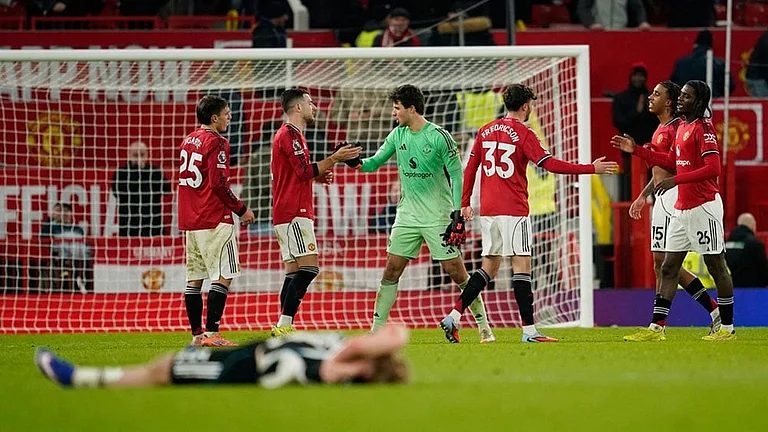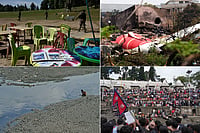Beasts Of Prey
Following are some of the rarest species whose very existence is threatened due to unchecked hunting
Critically Endangered
- Himalayan Quail
- River Terrapin
- Malabar Civet
- Pygmy Hog
- Hoolock Gibbon
- Narrow-headed softshell turtle
- Swamp Deer
- Asiatic Black bear
- Capped Langur
- Markhor (Goat-antelope)
***

Though hunting has been totally banned in most of India since 1991, this doesn't prevent industrialists and movie stars from shooting black buck, chinkara, partridge and peahens. In much the same way, the stringent, highly comprehensive Wildlife (Protection) Act of 1972 doesn't stop all the animals and birds it's supposed to protect from ending up on the dinner tables of people like IAS officer Priyabrata Patnaik, who celebrated his birthday at the Bhubaneshwar Club a few years ago with a sumptuous repast of nearly 100 protected bird species shot down around Chilika Lake. Or prominent Andhra politicians from supping on peacock and venison at lavish wedding feasts.
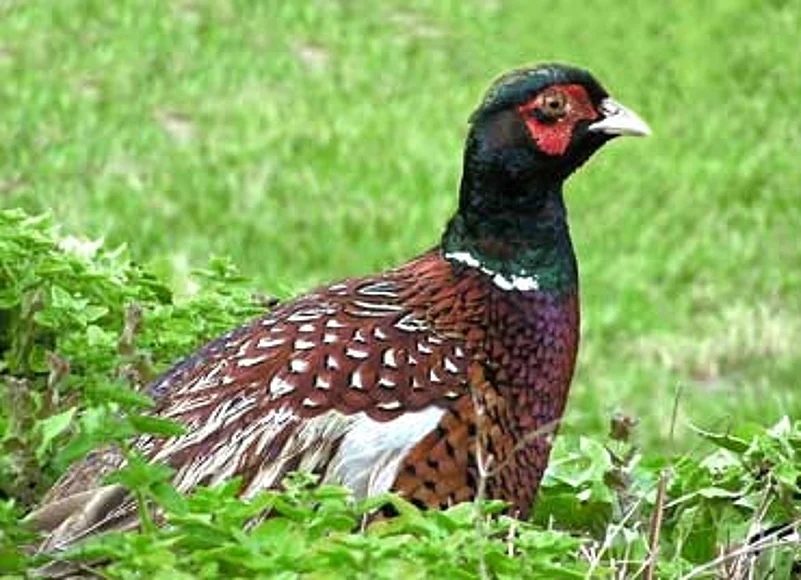
Pheasant
"Anything and everything you can think of is eaten," exclaims Samir Sinha, head of Traffic-India, a body which monitors wildlife trade. "The most commonly consumed ones are pheasants, partridges, spotted and barking deer, and wild boar, but there's a demand for many other wild species." Concurs Kartick Satyanarayanan of Wildlife SOS, who frequently busts illegal turtle meat transactions in and around Delhi: "Bisons are eaten in Bandipur, bear-paw soup in Orissa, monitor lizards and porcupines are eaten everywhere they are found, and civet cats, jackals, hedgehogs, pangolins are eaten in the South.... The list is endless."
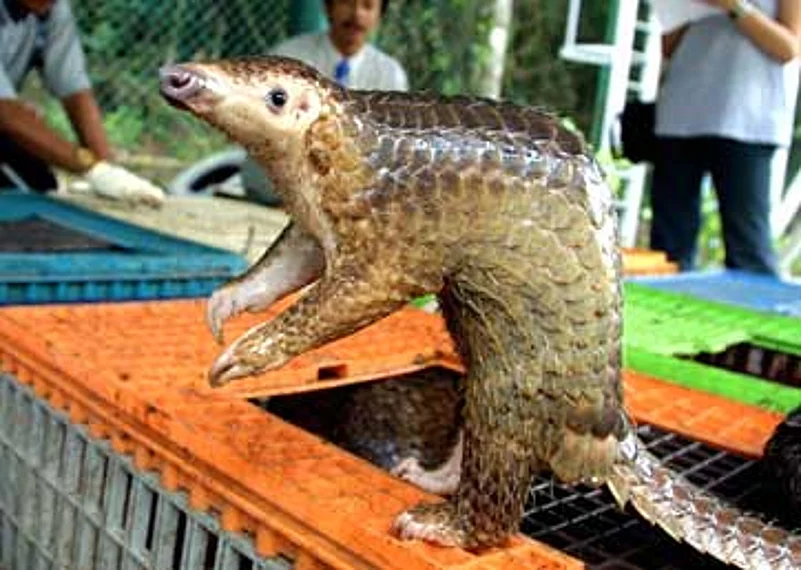
Pangolin
The compulsions that drive 'bushmeat' consumers are varied. Hosts who aspire to be one up on those who serve foie-gras and caviar put chital and pheasant on their banquet menu and are prepared to pay any price for it. "Rich people in Delhi know of hotels which provide spotted deer and sambhar from Uttar Pradesh and Uttarakhand," says Tito Joseph, Wildlife Protection Society of India (WPSI) programme cordinator. On the other hand, as Sinha puts it, celebrities with a penchant for shikar are driven by "a misplaced macho feeling", or because they feel it gives them an aristocratic or feudal pedigree.
Others look to wild animals for dubious medicinal 'cures' that hakims and vaids extract from them, for everything from impotency to eye-pain. Among these are fat from the base of the monitor lizard's tail, melted down and sold in little bottles as an aphrodisiac, the gall bladders of sloth bears for rheumatism, and rings fashioned out of the pangolin's scales that are sold at village haats as charms to ease haemorrhoids and labour pain. In addition, the slow loris, a meek, saucer-eyed arboreal creature, is eaten to bring down raging fevers.
Wild animals are also hunted by adivasis who have traditionally lived off them, and exploited as a free source of protein by subsistence agriculturists living on clearings at the edge of forests. At the Chambal Valley Reserve, for example, says Rajeev Chauhan, Etawah-based founder of the Society for Conservation of Nature, "Wild boar, sambhar, peacocks, porcupines—the locals eat them all. Their logic is: why buy vegetables and vegetable oil when their rates are going up, while all this is available for free."
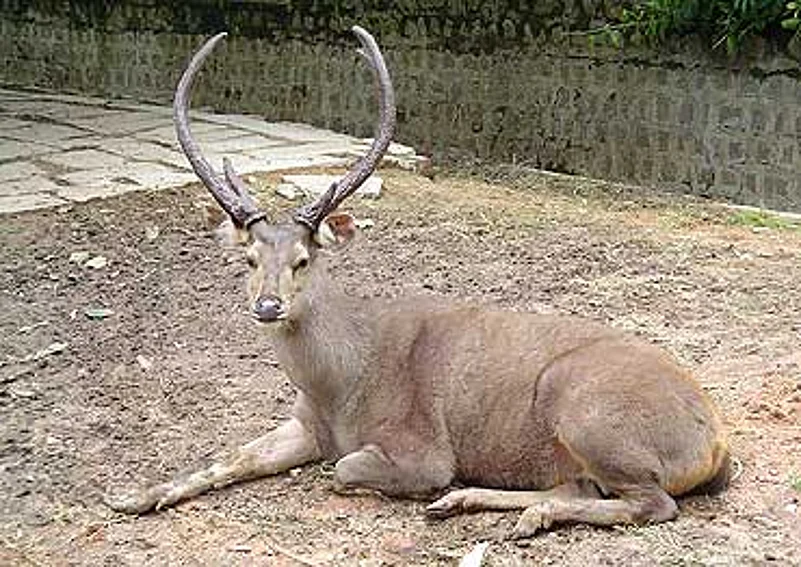
Sambhar
Despite the widespread consumption of endangered species, wildlife experts say it's impossible to calculate the rate and extent to which their numbers are being depleted. But they are all agreed that "it's one of the biggest threats to India's wildlife," as wildlife researcher Uttara Mendiratta puts it. "There's just a handful of studies on bushmeat consumption, that too, mostly in the Northeast," she adds.
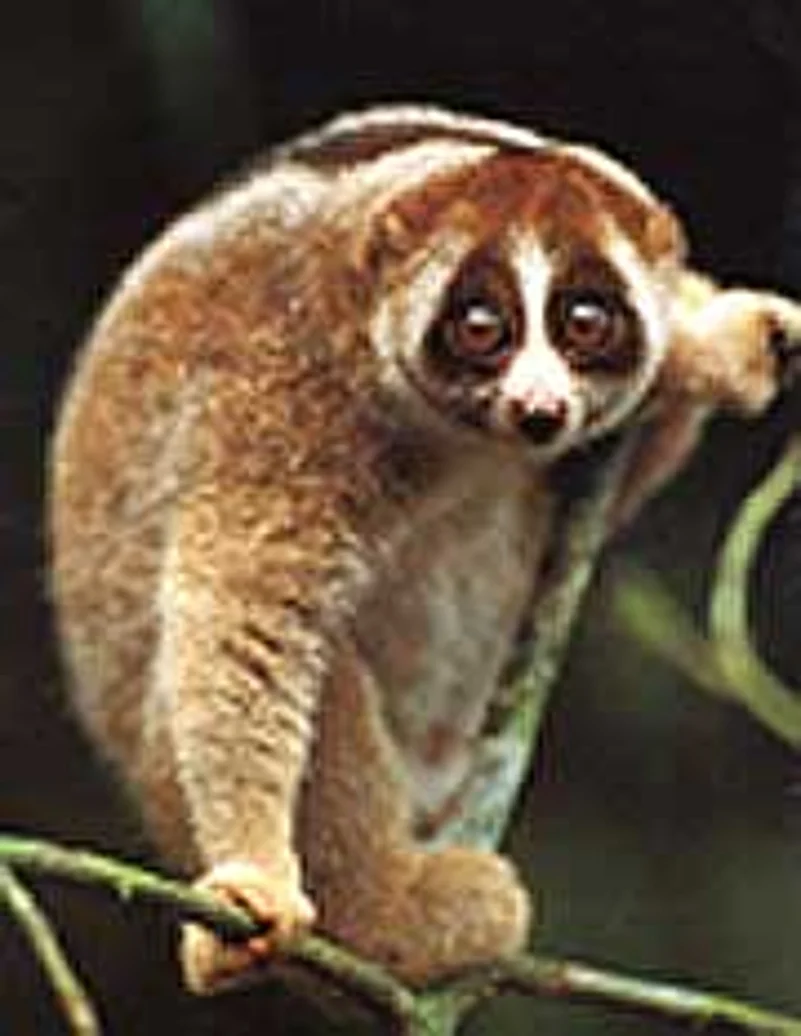
| Slow Loris |
One of India's two main biodiversity hotspots, the Northeast boasts nine sanctuaries, two national parks and as many as 200 mammal species including the rare hoolock gibbon and clouded leopard. And around a hundred indigenous communities accustomed to making a meal of them. The parks and sanctuaries are 'protected' only on paper, due to community ownership of forest land, social sanction for hunting and local traditions like giving 30 basketfuls of smoked wildmeats as 'bride price'. The range of wild animal species that end up in cooking pots in this region is eclectic. "We eat everything that's available," a government official from Tezu in Arunachal declares gaily. "We eat wild boar, deer for weddings and community feasts, and all kinds of birds except the crow, because it gives a bad smell. Also, rat, monkey, squirrel... I even ate elephant once—it tasted just like Nutrela!"
Bushmeat consumption is, not surprisingly, higher in remote villages with little access to markets, where it's less than half the price of domesticated animal meat. In the villages of Arunachal, for instance, fresh wild meat costs
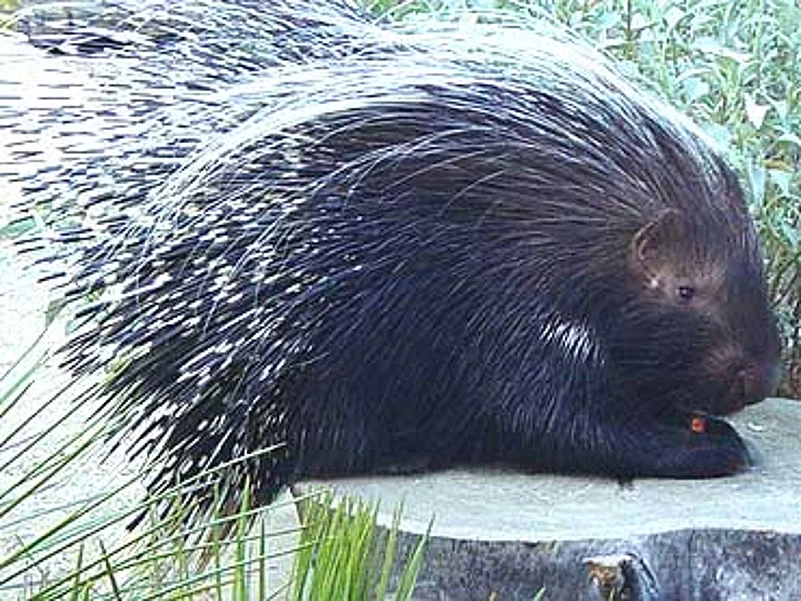
Porcupine
Rs 80 per kg, while domestically reared poultry or mutton costs Rs 250 per kg. Comments wildlife researcher Ambika Appadurai, "The majority of the villagers prefer wild meat because it's considered delicious and also believed to be non-contaminated unlike the meat of domestic animals that eat refuse found around the villages."
There's a rising demand for such meats in northeastern cities, too, where people are willing to pay five times the price of domesticated animal meat. "The meat of wild animals is very tender and has a nice flavour," admits a Shillong resident, who clandestinely purchases wild boar and venison when her family wants a break from pork and beef. "If you go to the locals, they'll show you the hooves to prove it's not mutton. It's easy to tell with wild boar too, because unlike domesticated pig it doesn't have fat."
Largely due to unchecked hunting, 172 species from India have already made it to the Red List of animals on the brink of extinction, annually updated by the World Conservation Union. And if such rare fare continues to be sold at village haats and shadowy restaurants, the goose will be well and truly cooked for India's biodiversity.








